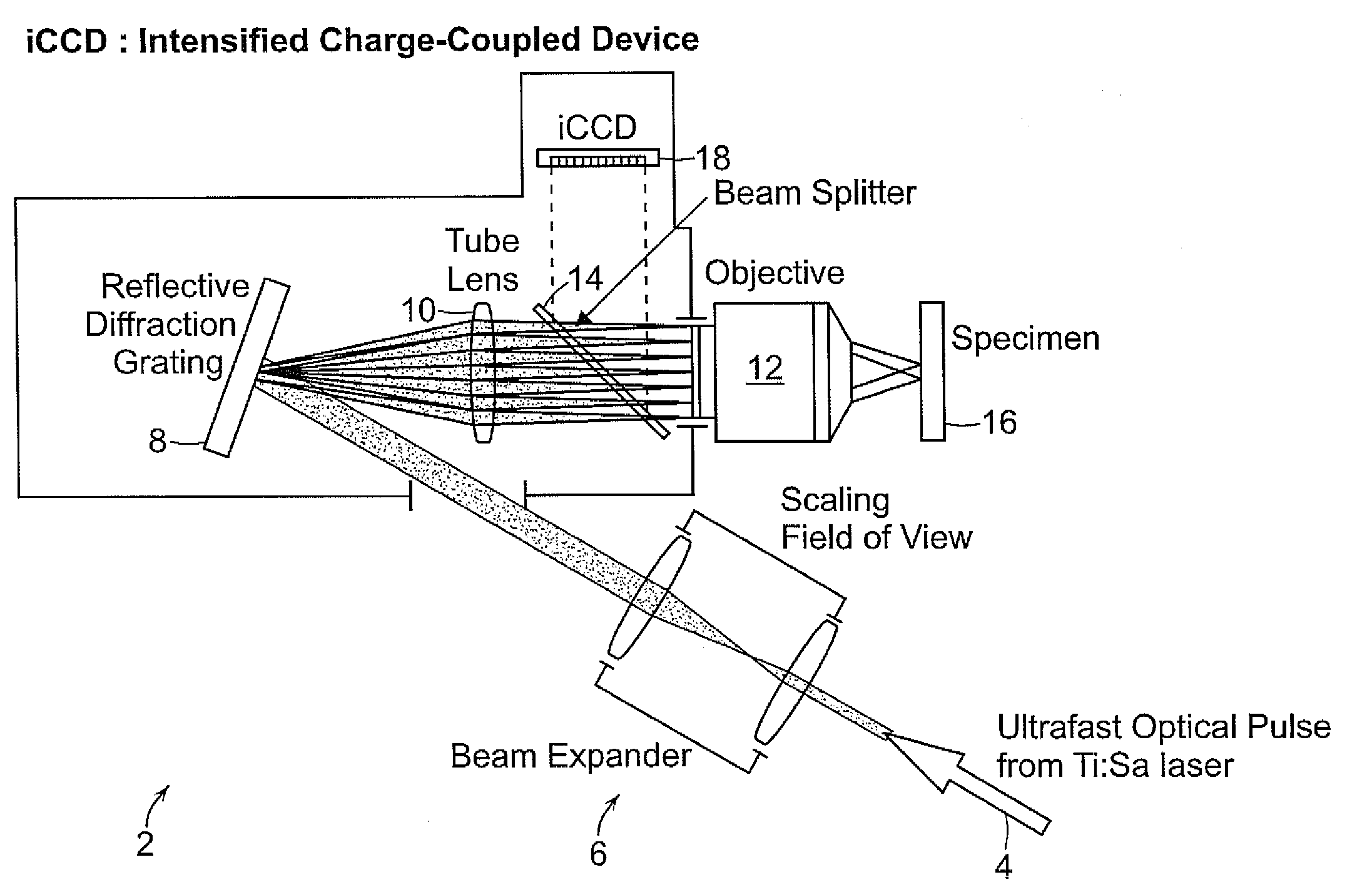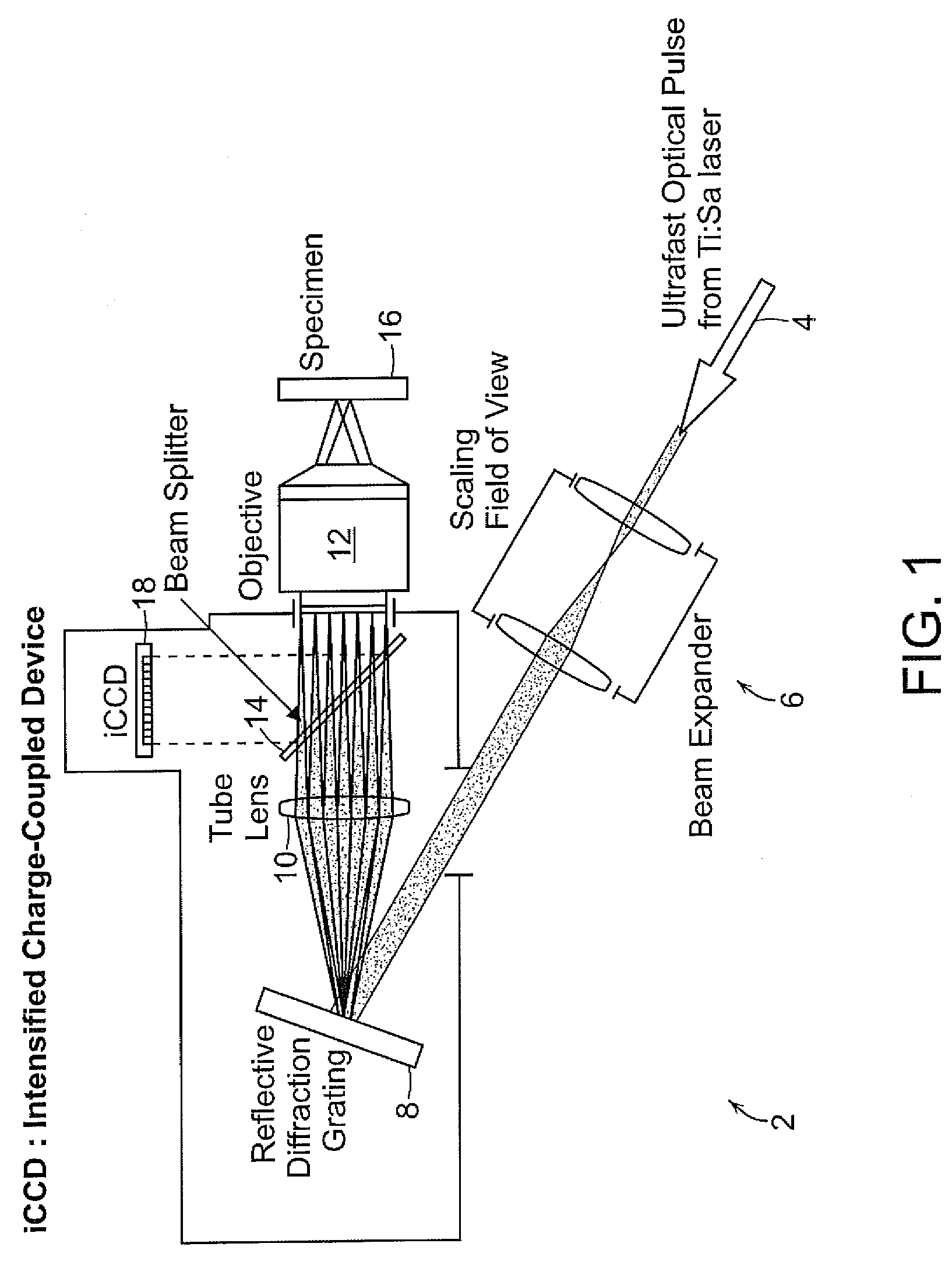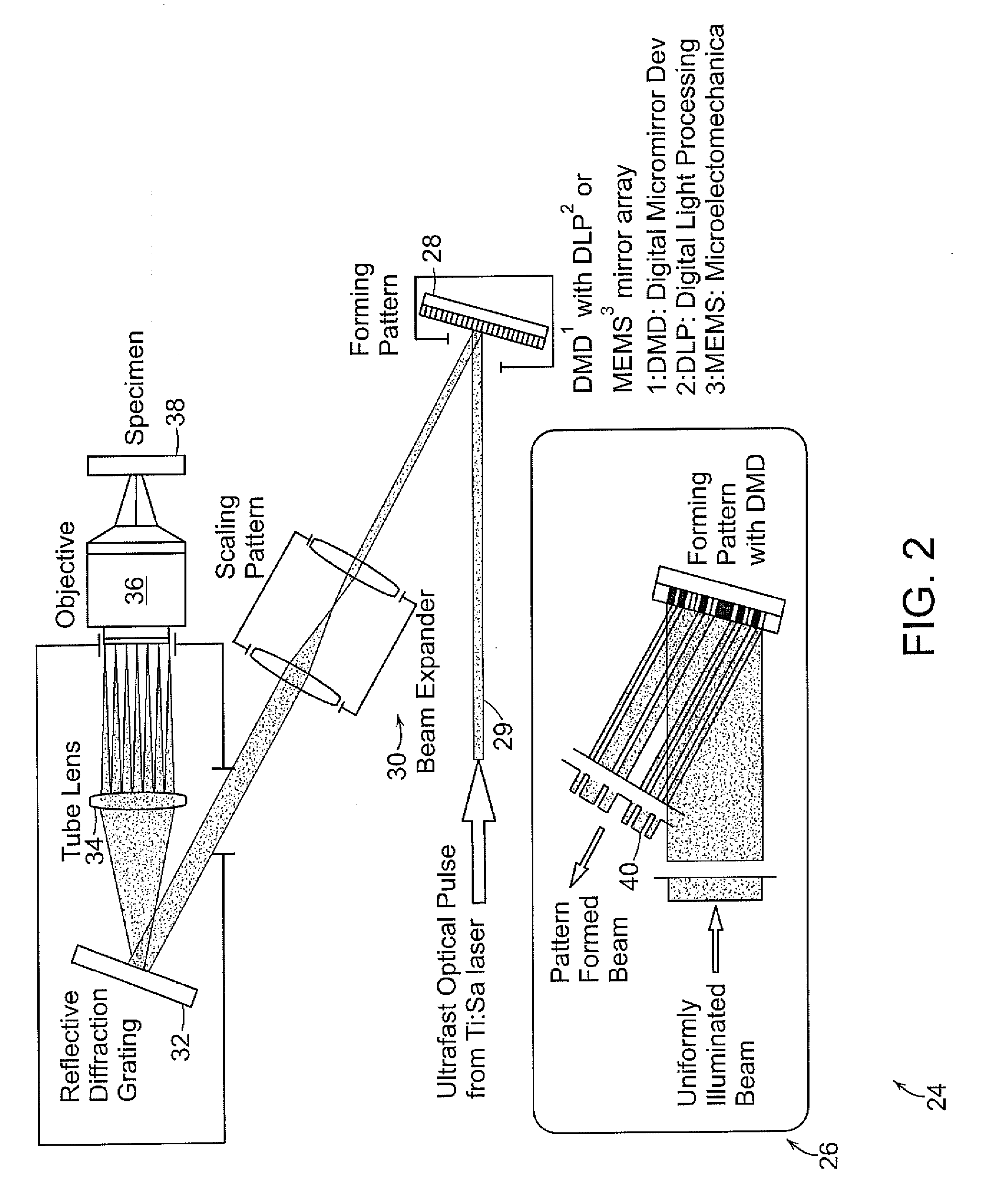3D two-photon lithographic microfabrication system
a lithographic microfabrication and two-photon technology, applied in the field of multi-photon excitation microscopy/microfabrication, can solve the problems of insufficient long image acquisition or fabrication time, and inability to fully evaluate the depth discrimination capability of wide-field illumination system
- Summary
- Abstract
- Description
- Claims
- Application Information
AI Technical Summary
Benefits of technology
Problems solved by technology
Method used
Image
Examples
Embodiment Construction
[0016]The invention proposes the design of a 3-D multiphoton lithographic system which generates 3-D microstructures with multiphoton wide-field illumination. This is the first time a microfabrication technique with multiphoton wide-field illumination is introduced. A mathematical model has been derived based on diffraction theory, to predict the axial resolution for both multiphoton wide-field illumination microscopy and microfabrication based on numerical simulation. Finally, the design parameters to improve axial resolution are reviewed. Future works include combining this optical model with a photopolymerization process model to predict fabrication efficiency and resolution.
[0017]FIG. 1 shows a microscopic imaging system 2 based on depth-resolved widefield illumination. The microscopic imaging system 2 includes a 4-f imaging system and a reflective diffraction grating structure 8 acting as a dispersive element. If a mirror is located at the image plane instead of the reflective ...
PUM
 Login to View More
Login to View More Abstract
Description
Claims
Application Information
 Login to View More
Login to View More - R&D
- Intellectual Property
- Life Sciences
- Materials
- Tech Scout
- Unparalleled Data Quality
- Higher Quality Content
- 60% Fewer Hallucinations
Browse by: Latest US Patents, China's latest patents, Technical Efficacy Thesaurus, Application Domain, Technology Topic, Popular Technical Reports.
© 2025 PatSnap. All rights reserved.Legal|Privacy policy|Modern Slavery Act Transparency Statement|Sitemap|About US| Contact US: help@patsnap.com



